The annual national Big Butterfly Count (https://bigbutterflycount.butterfly-conservation.org/) finishes this Sunday 7th August. Everyone is welcome to join in, you don’t have to be an expert! Here’s some I found in the fields around Paulerspury and Pury End last week.
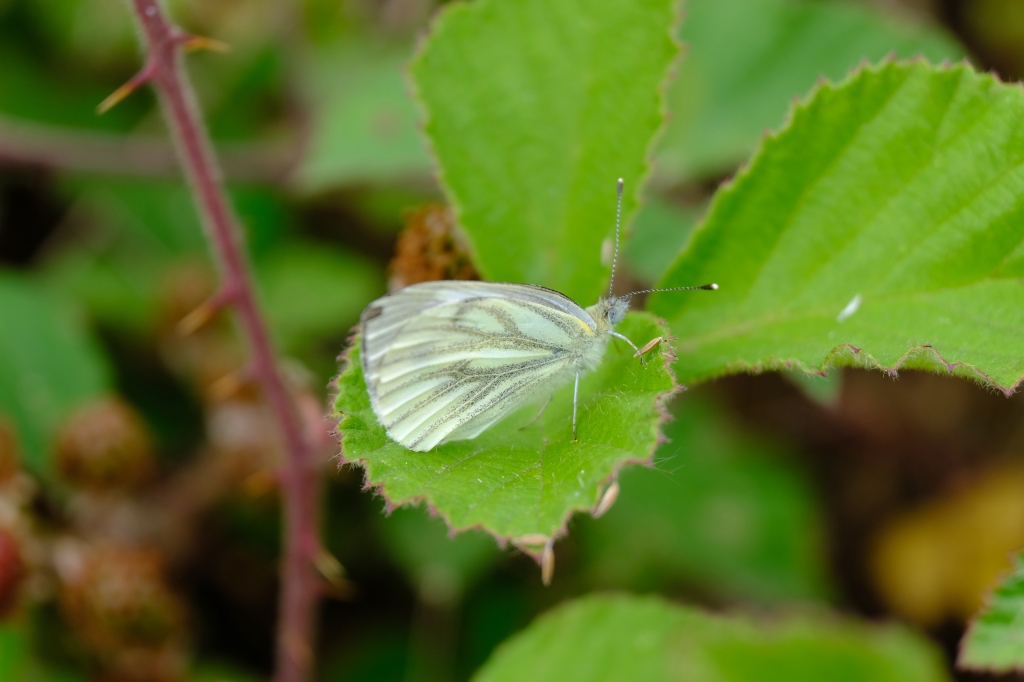
Photo Credit: Sally Woodbridge
The Green-veined White likes it damp and overgrown. Unless you’re lucky enough to have a wilderness garden it’s less likely that you’ll find this one at home, a wander down the field may be needed. The greenish veins are the trick to telling this apart from the Small White butterfly. Our Jack-by-the-Hedge (Alliaria petiolata) and Cuckoo flowers (Cardamine pratensis) are a couple of its favourite foods.
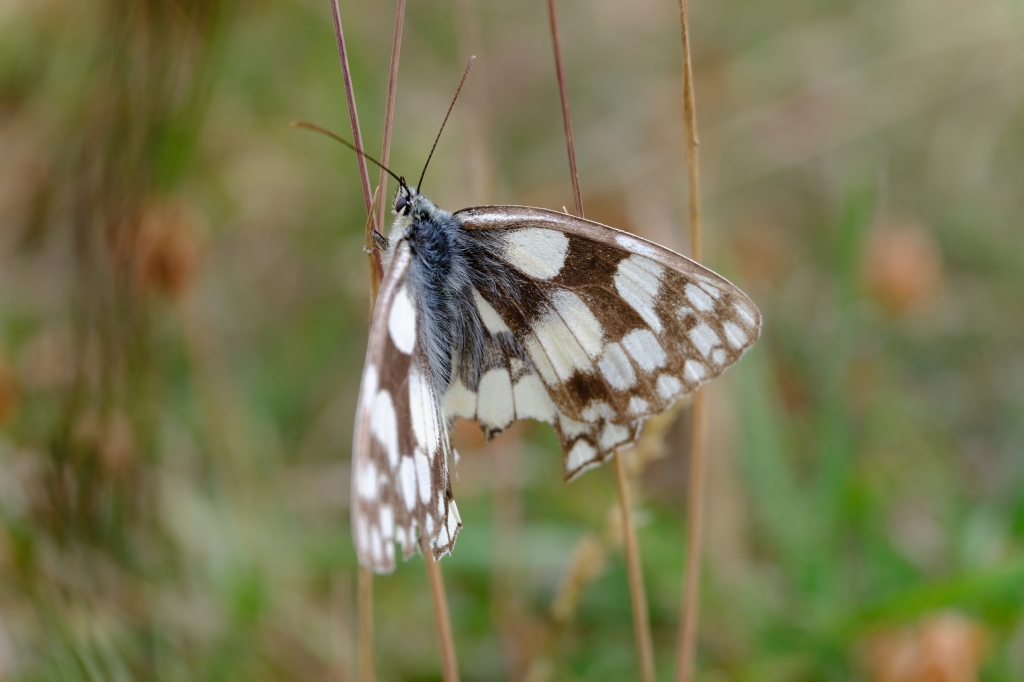
Photo Credit: Sally Woodbridge
Again you may need to leave your garden for this one. The Marbled White gets me excited because it needs tall natural grassland. It is lovely that some of the local countryside is being left uncultivated for wildlife to thrive in. Hanging out halfway down a long grass stem is a common place to find this distinctive butterfly.
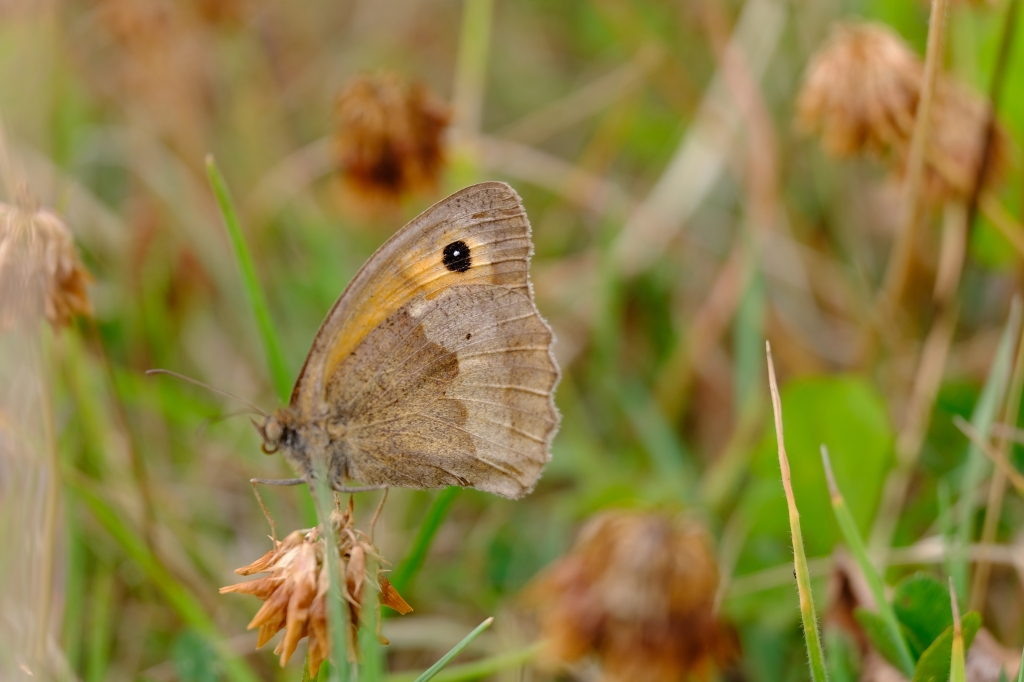
Photo Credit: Sally Woodbridge
Even on a dull day you’ll see Meadow Brown butterflies out. I’ve seen them fluttering though my garden all week. It’s an easy one to spot, but don’t get it confused with the next one, the smaller, more coppery coloured Gatekeeper.
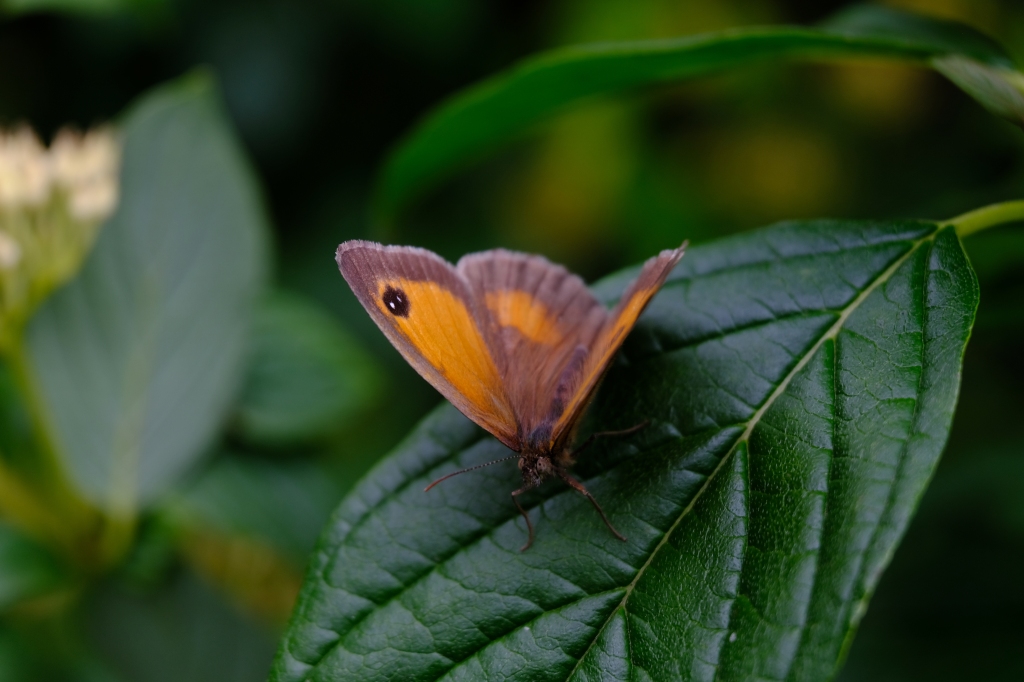
Photo Credit: Sally Woodbridge
Gatekeeper butterflies get their name because they like hanging around the flowers growing in sunny gateways. They also love the nectar from brambles, and we’ve got a lot of that here. If you see a quick orange glint in the hedgerow I bet it’s one of these!
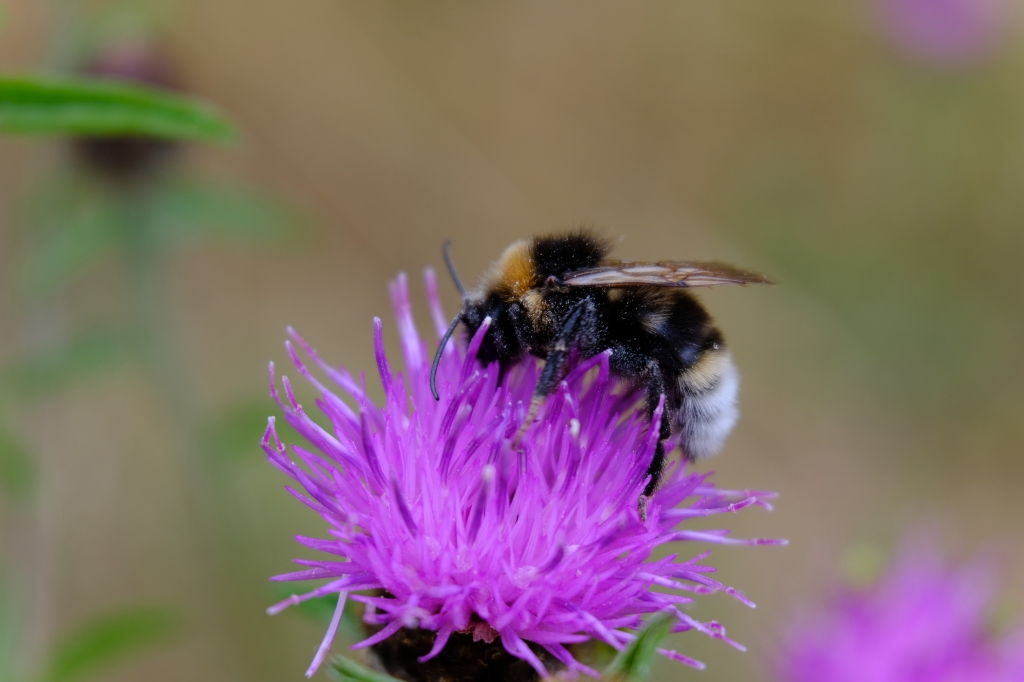
Photo Credit: Sally Woodbridge
This is such a cool type of bee! Cuckoo bees lay their eggs in other bees’ pollen stores. The Cuckoo bee larvae hatch before the host larvae and eat the pollen and host egg. Because of this they don’t need to collect pollen, so they don’t have the distinctive pollen baskets, and they don’t have worker bees either.
- Bebbington, J. and Lewington, R. (2018) Guide to the butterflies of Britain and Ireland. Field Studies Council, OP184.
- Buglife, Chris O’Toole and Chris Shields (2020) Guide to bees of Britain. Field Studies Council, OP119.
- Bumblebee Conservation Trust: https://www.bumblebeeconservation.org/
- Butterfly Conservation: https://butterfly-conservation.org/
If you enjoyed this please enter your email address below to follow this blog and receive notifications of new posts by email.


